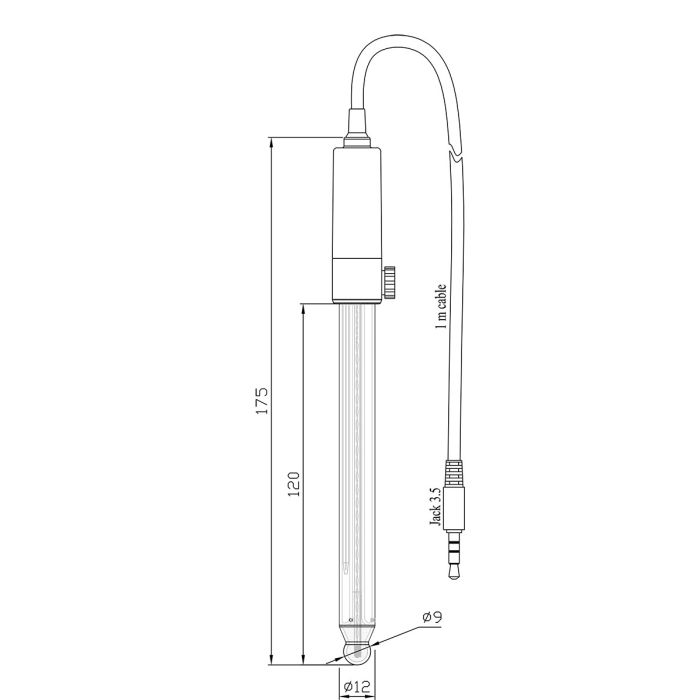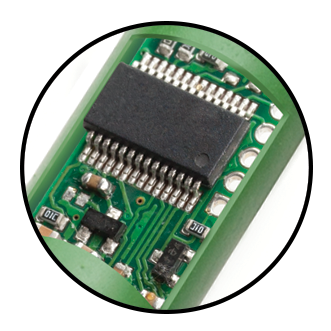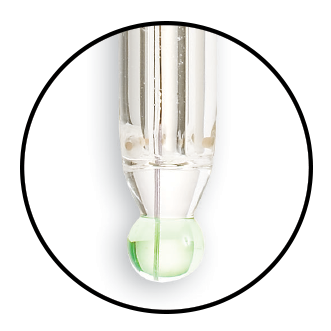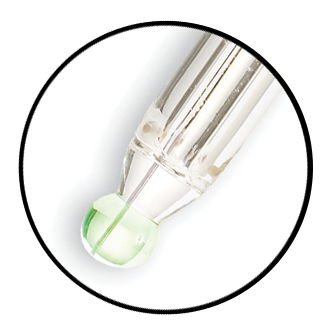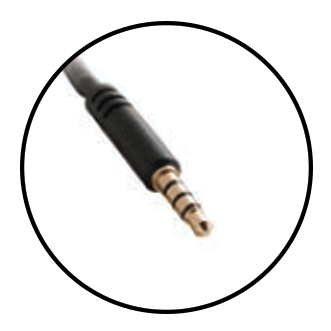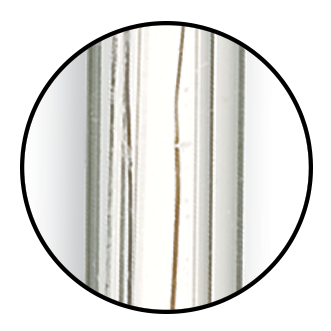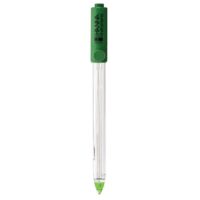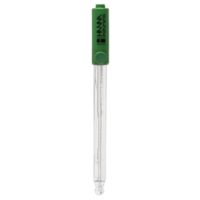Built-In Microchip
The built-in microchip stores sensor type, serial number and calibration information including date, time, offset, slope, probe condition and buffers used. This information is automatically retrieved by edge® once the electrode is plugged in. The ability to transfer information allows for hot swapping of probes without having to recalibrate. All pH measurements are performed within the electrode and transferred digitally to the meter. This overcomes any noise issues associated with the traditional high impedance analog measuring system. Electrical noise can be generated from a built-in temperature sensor and while working in a humid environment.
Spherical Glass Tip
The spherical shaped tip design allows for a wide area of contact with the measured sample. This permits a faster electrode response with a higher degree of stability. The glass sensing tip on the HI10430 uses Hanna’s high temperature (HT) glass formulation that has a resistance of approximately 400 megaohms. The high impedance makes the HI10430 ideal for aggressive chemical applications and high temperature applications. Conventional glass formulations suffer from a greatly reduced lifespans at high temperatures relative to high temperature glass.
Triple Ceramic Junction
The triple ceramic junction allows a higher flow rate of electrolyte from the reference cell into the solution. A standard pH electrode will use a single ceramic junction that allows for 15 to 20 µL/hour of electrolyte to flow; the HI10430 has three ceramic junctions, providing for 40 to 50 µL/hour of electrolyte to flow. This high flow rate provides faster electrode response and a more stable measurement in viscous solutions or samples of low conductivity.
Double Junction Reference
A double junction electrode has an internal compartment surrounding the reference wire. Silver ions are present in the electrolyte of the internal compartment, which houses the Ag/AgCl reference wire; the electrolyte outside this compartment is silver free. The double junction design means that virtually no silver from the electrode enters the sample. This design allows measurement in applications where silver ions in the sample are undesirable or silver precipitates on the junction are likely to form.
Glass Electrode Body
The glass electrode body is suitable for a wide range of applications due to its chemical resistance. The glass electrode is compatible with many non-aqueous solvents and other aggressive chemicals. Glass is also resistant to many forms of radiation, such as ultraviolet radiation.
Purchase & Shipping
All prices are inclusive of GST and not all items are stock items, if you require an immediate solution please send an email to sales@hannainst.com.au or call us on (03) 9769 0666.
Free standard delivery: We offer free delivery within Australia on orders over $150, typically arriving within 5 to 7 days. Delivery times may vary depending on the courier service and the recipient’s location. Free shipping is not available with other offers or discounts.
Same-day dispatch: Place your order before 1 PM Monday to Friday for same-day despatch (leaves our warehouse). Delivery times may vary depending on the courier service and the recipient’s location. Subject to stock availability.
Please note that we do not offer shipping to PO Box addresses.
